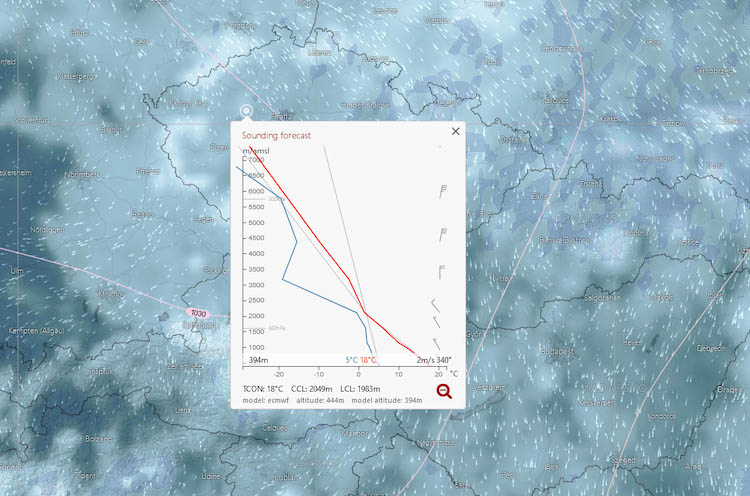

The location and existence of this feature is important in the generation of mountain waves. Height of Stable Layer - The height (between 12,000 and 18,000 feet above mean sea level) where the smallest lapse rate exists. It can be considered a "trigger temperature" for that level.įreezing Level - The height where the temperature is zero degrees Celsius. It estimates the base of cumulus clouds that are produced by surface heating only.Ĭonvection Temperature (ConvectionT) - The surface temperature required to make the airmass dry adiabatic up to the given level. This inhibitive energy can be overcome through surface heating, cooling aloft, lifting mechanisms (orographic, frontal, gravity waves, etc.)Ĭonvective Condensation Level - The height to which an air parcel possessing the average saturation mixing ratio in the lowest 4000 feet of the airmass, if heated sufficiently from below, will rise dry adiabatically until it just becomes saturated. The more negative this number, the more energy is required to initiate convection. Values around or greater than 1000 suggest the possibility of severe weather should convective activity develop.ĬIN (Convective Inhibition) - An integrated measure of the amount of energy needed to initiate convective activity, also known as the negative area on a thermodynamic diagram.

Larger values are indicative of greater instability and the possibility of stronger convective activity, including thunderstorms. CAPE (Convective Available Potential Energy) - An integrated measure of the energy available for convective development, also known as the positive area on a thermodynamic diagram.


 0 kommentar(er)
0 kommentar(er)
